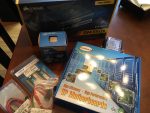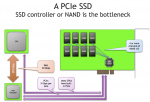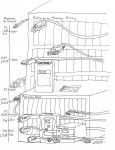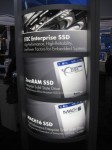Today I’m going to dive into the hardware I selected for FreeNAS, starting with the motherboard, CPU, and memory. FreeNAS runs on any PC hardware, but building a reliable and scalable storage solution means picking higher-end components. I selected a Supermicro X10SL7 server-class motherboard with 14 (!) SAS/SATA ports paired with an Intel Xeon E3-1231v3 (Haswell) CPU and ECC memory from Crucial.
SAS
Why Are PCIe SSDs So Fast?
The world of storage can be confusing, with obscure terms hiding massive differences in technology and performance. Such is the case for the latest PCI express SSDs: They are much faster than traditional SAS or SATA SSDs, but many aren’t sure exactly why. In this article, I will try to explain the real difference.
How Fast Is It? A Storage Infographic
How fast is a hard disk drive? How about the various flavors of SATA and Fibre Channel? Check out this handy Pack Rat infographic to answer the question, “how fast is it?”
The Four Horsemen of Storage System Performance: I/O As a Chain of Bottlenecks
It is tempting to think of storage as a game of hard disk drives, and consider only The Rule of Spindles. But RAM cache can compensate for the mechanical limitations of hard disk drives, and Moore’s Law continues to allow for ever-greater RAM-based storage, including cache, DRAM, and flash. But storage does not exist in a vacuum. All that data must go somewhere, and this is the job of the I/O channel.
STEC Spills the Beans on ZeusRAM SSD
STEC may not have been quite ready to reveal their next-generation ZeusRAM solid-state disk (SSD), but they are demonstrating it anyway at EMC World in Boston this week. The ZeusRAM is a fundamentally different animal from the existing ZeusIOPS drive in one critical way: Rather than using flash memory for primary data storage, the ZeusRAM uses DRAM. This improves reliability and longevity and ought to raise the bar on performance as well.




